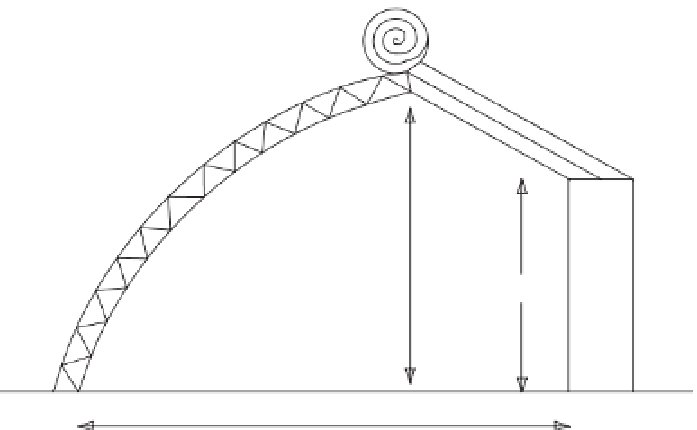Agriculture Reference
In-Depth Information
E
R
PE
North
3.8 m
R
2 m
9 m
Fig. 7.5.
A 'lean-to' solar greenhouse (improved version) built against a wall (on the north side) that is
often used in cold areas of China. Rolling mats (e) on the upper part can be unrolled at night to decrease
heat losses. R, Reflecting surface; Pe, double Pe plastic film.
When designing a greenhouse, placing
the main transport corridor adjacent to the
(colder) north wall of the greenhouse may
result in better use of energy.
Double doors, or similar devices, are of
great interest both from a thermal insulation
point of view as well as to limit the entrance
of insects. The limitation of 'thermal bridges'
in greenhouse structures, by means of perti-
nent insulation, is a usual measure in cold
areas.
The partitioning of the greenhouse by
means of interior partitions, that may be
fixed or mobile, allows for zones with inde-
pendent microclimates to be created. They
can separate different crops or different
varieties, with different climatic require-
ments. Obviously, the partitions must be
transparent to avoid light reduction. The
ability to control the microclimate of each
compartment independently in greenhouses
with climate control must be planned in
advance.
grower's objectives, to the aerial part of the
crop, or to the roots, or to both.
In the heating of the aerial organs the
heat is transmitted by convection or radia-
tion, whereas in heating the soil or substrate
the heat is transmitted by conduction. What
really matters is the temperature of the
plants and not that of the air surrounding
them.
The temperature of the plant surface
results from heat exchanges such as convec-
tion from the air and radiation from all the
surrounding surfaces, to which latent heat
exchanges by transpiration must be incor-
porated, mainly during the day, and some-
times those of water vapour condensation
in the form of droplets over the leaves.
7.4.1
Convective heating
The three usual air heating systems (Fig. 7.6)
are: (i) fan coils; (ii) hot air generator; and
(iii) heat pumps (water/air or air/air).
Fan coils transmit heat from a hot body
to the air. Water fan coils are the most com-
mon. Hot water circulates through the metal
pipes, which exchange heat with the air by
convection. The contact surface is increased
7.4
Heating
Heat inputs to raise the greenhouse temper-
ature can be applied, depending on the


